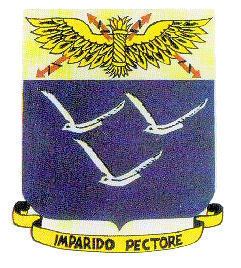Active 1942–1946 Role Bombardment | ||
 | ||
Branch United States Army Air Forces Garrison/HQ Pacific Ocean Theater of World War II | ||
The 331st Bombardment Group is an inactive United States Air Force unit. It was last assigned to the 315th Bombardment Wing, being stationed at Northwest Field, Guam. It was inactivated on 15 April 1946.
Contents
During World War II, the unit was initially a B-17 Flying Fortress and B-24 Liberator operational training unit (OTU). Redesignated as a replacement training unit (RTU) in December 1943. Inactivated on 1 April 1944 when Second Air Force switched to B-29 Superfortress training. Late in the war the group was reactivated and trained as a Very Heavy (VH) B-29 Superfortress group The group served in the Pacific Ocean theater of World War II as part of Twentieth Air Force. The 331st Bomb Group's aircraft engaged in very heavy bombardment B-29 Superfortress operations against Japan.
Hurricane Ike (2008)
The unit was reactivated at Randolph AFB, Texas, in 2008 as the 331st Air Expeditionary Group, a special unit formed to support Hurricane Ike relief efforts. Units and personnel assigned to the 331st came from both the active and reserve components of the Air Force and Navy.[1]
History
Constituted as 331st Bombardment Group (Heavy) on 1 July 1942 and activated on 6 July at Salt Lake City AAB, Utah. Assigned to Second Air Force. The mission of the 331st was initially that of a replacement training unit. Equipped with B-17's and B-24's for duty as a replacement training unit at Casper AAFld, Wyoming. Inactivated on 1 April 1944.
Redesignated 331st Bombardment Group (Very Heavy). Activated on 12 July 1944 at Dalhart AAFld, Texas. Assigned to Second Air Force. Trained for combat with B-29B's initially at Dalhart, then to McCook AAFld, Nebraska.
The 331st was assigned the B-29B model. This model was built at Bell-Atlanta. The B-29B was a limited production aircraft, built solely by Bell-Atlanta. It had all but the tail defensive armament removed, since experience had shown that by 1944 the only significant Japanese fighter attacks were coming from the rear. The tail gun was aimed and fired automatically by the new AN/APG-15B radar fire control system that detected the approaching enemy plane and made all the necessary calculations. The elimination of the turrets and the associated General Electric computerized gun system increased the top speed of the Superfortress to 364 mph at 25,000 feet and made the B-29B suitable for fast, unescorted hit-and-run bombing raids and photographic missions.
Moved to Northwest Field, Guam, April–June 1945, and assigned to the 315th Bomb Wing, Twentieth Air Force. Bombed Japanese-held Truk late in June 1945. Flew first mission against the Japanese home islands on 9 July 1945 and afterward operated principally against the enemy's petroleum industry on Honshū. Despite the hazards of bad weather, fighter attacks, and heavy flak, the 331st bombed the coal liquefaction plant at Ube, the Mitsubishi-Hayama petroleum complex at Kawasaki, and the oil refinery and storage facilities at Shimotsu, in July and August 1945, and received a Distinguished Unit Citation for the missions.
After the war the group dropped food and supplies to Allied prisoners of war in Japan. Inactivated on Guam on 15 April 1946.
